Missouri's
Tumultuous Years
Quantrill
and Bell Starr
Carthage, MO
March 22, 2000
In the  southwest corner
of Missouri stands the quiet serene town of Carthage. The epitome
of a small town mid-America, this corner of the state holds a
historically tragic legacy to the struggles of this country
during the trying years of the mid 1800s. A small museum and a
few displays on the main floor of the courthouse attest to the
struggles of the times. Again, slavery was the cause of
considerable turmoil. The issue of slavery had existed for a
number of years along the Missouri-Kansas border. As early as
1855 slaveholders in Missouri and northern Arkansas were feuding
with Kansas abolitionists on the topic. Although not uncommon,
slavery in Missouri was not wide spread. Missouri's agricultural
economy did not promote large plantations requiring slave labor,
as in the deep south. The majority of farms raised subsistence
crops, harvested in the late summer and consumed during the
winter by the families who worked the fields. This was
particularly true in southwest Missouri. Here it made more sense
to invest in a mule which could pull a wagon or plow, be ridden
to town and cost little to feed.
southwest corner
of Missouri stands the quiet serene town of Carthage. The epitome
of a small town mid-America, this corner of the state holds a
historically tragic legacy to the struggles of this country
during the trying years of the mid 1800s. A small museum and a
few displays on the main floor of the courthouse attest to the
struggles of the times. Again, slavery was the cause of
considerable turmoil. The issue of slavery had existed for a
number of years along the Missouri-Kansas border. As early as
1855 slaveholders in Missouri and northern Arkansas were feuding
with Kansas abolitionists on the topic. Although not uncommon,
slavery in Missouri was not wide spread. Missouri's agricultural
economy did not promote large plantations requiring slave labor,
as in the deep south. The majority of farms raised subsistence
crops, harvested in the late summer and consumed during the
winter by the families who worked the fields. This was
particularly true in southwest Missouri. Here it made more sense
to invest in a mule which could pull a wagon or plow, be ridden
to town and cost little to feed. 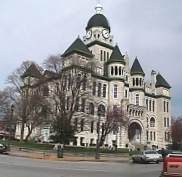 Human labor for the majority, was much too
expensive to purchase and maintain. Attempts to balance the
number of "slave" and 'free" states in the rapidly
expanding Union resulted in a series of Congressional Compromises
being enacted, several centering on the status of Missouri. Under
the Missouri Compromise, Missouri was designated a
"slave" state with the provisions that slavery would
not extend to other regions west of the Mississippi River and
north of the southern boundary of Missouri. The later
Kansas-Nebraska Bill and the Dred Scott decision by the U.S.
Supreme Court nullified this Act. Control of Missouri became one
of the most critical military issues west of the Mississippi
River. As the states declared their allegiance, it was apparent
that Missouri's geographical location was as important as its
political influence and human resources. As a "border
state" Missouri separated the western-most Confederate
states from the North. Missouri was also the gateway to the West.
Thousands of emigrants and trade wagons made their way from
Independence, Missouri, north and west to Oregon, and south to
the
Human labor for the majority, was much too
expensive to purchase and maintain. Attempts to balance the
number of "slave" and 'free" states in the rapidly
expanding Union resulted in a series of Congressional Compromises
being enacted, several centering on the status of Missouri. Under
the Missouri Compromise, Missouri was designated a
"slave" state with the provisions that slavery would
not extend to other regions west of the Mississippi River and
north of the southern boundary of Missouri. The later
Kansas-Nebraska Bill and the Dred Scott decision by the U.S.
Supreme Court nullified this Act. Control of Missouri became one
of the most critical military issues west of the Mississippi
River. As the states declared their allegiance, it was apparent
that Missouri's geographical location was as important as its
political influence and human resources. As a "border
state" Missouri separated the western-most Confederate
states from the North. Missouri was also the gateway to the West.
Thousands of emigrants and trade wagons made their way from
Independence, Missouri, north and west to Oregon, and south to
the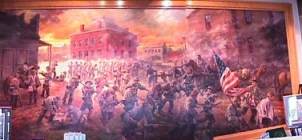 markets of Santa Fe. A major issue was whether Missouri would
stay in the Union or join the Confederacy. Pro-southern Governor
Claiborne F. Jackson was seeking to take the 60,000 men Missouri
State Guard south to join the Confederacy. Sent to stop him were
1100 German-American union volunteers from St. Louis commanded by
Col. Franz Sigel. The battle had started early that morning some
9 miles north of Carthage. After a fierce artillery and infantry
duel, the outnumbered Union soldiers had been forced to retreat
to avoid encirclement by the Confederated cavalry. The battle of
Carthage was
markets of Santa Fe. A major issue was whether Missouri would
stay in the Union or join the Confederacy. Pro-southern Governor
Claiborne F. Jackson was seeking to take the 60,000 men Missouri
State Guard south to join the Confederacy. Sent to stop him were
1100 German-American union volunteers from St. Louis commanded by
Col. Franz Sigel. The battle had started early that morning some
9 miles north of Carthage. After a fierce artillery and infantry
duel, the outnumbered Union soldiers had been forced to retreat
to avoid encirclement by the Confederated cavalry. The battle of
Carthage was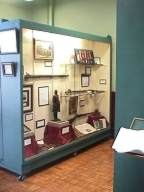 fought on July 5, 1861. Although preceded by
several skirmishes, it was the first full scale land battle of
the Civil War. It included infantry, artillery and cavalry and
lasted an entire day. This period of history produced many
notable characters in Missouri. One that developed during the
tumultuous years, before the civil war erupted in eastern
Missouri, was the infamous Belle Starr, affectionately known by
the dime novelists as the "Bandit Queen". Belle Starr
grew up as Myra Maebelle Shirley in the eastern Missouri town of
Carthage where her father, the owner of a hotel and tavern, was a
strong confederate sympathizer. Schooled in all the finer arts,
she would often play piano for guests at the hotel or tavern.
Pre-civil war Missouri was a power keg of emotions, giving rise
to the infamous band of marauders known as Quantrill's Raiders,
who's ranks contained some of the "wild west's" most
notorious outlaws, such as Frank and Jessie James, and the
Younger brothers who often hung out at the Shirley tavern. This
often
fought on July 5, 1861. Although preceded by
several skirmishes, it was the first full scale land battle of
the Civil War. It included infantry, artillery and cavalry and
lasted an entire day. This period of history produced many
notable characters in Missouri. One that developed during the
tumultuous years, before the civil war erupted in eastern
Missouri, was the infamous Belle Starr, affectionately known by
the dime novelists as the "Bandit Queen". Belle Starr
grew up as Myra Maebelle Shirley in the eastern Missouri town of
Carthage where her father, the owner of a hotel and tavern, was a
strong confederate sympathizer. Schooled in all the finer arts,
she would often play piano for guests at the hotel or tavern.
Pre-civil war Missouri was a power keg of emotions, giving rise
to the infamous band of marauders known as Quantrill's Raiders,
who's ranks contained some of the "wild west's" most
notorious outlaws, such as Frank and Jessie James, and the
Younger brothers who often hung out at the Shirley tavern. This
often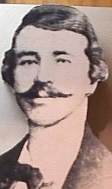 pretentious teenager reveled in the emotions created by outspoken
slave owners and confederate enthusiasts. When the war broke out,
Belle acted as spy and courier for the Quantrill camp, ferrying
information learned in the tavern. In 1864, John Shirley, Belle's
22 year old brother, who had risen to the rank of Captain in
Quantrill's Militia, was shot and killed outside Carthage. This
would become a significant emotional event in her life, as
evidenced by her reported promise to marry any man who would kill
the union soldier who gunned her brother down. By the end of the
war, Missouri was in shambles, with Carthage, and the hotel and
tavern having been burnt to the ground during the sacking of the
city by Union troops. The Shirleys moved to Texas where her
father would again open up an hotel and tavern. Once again it
became a haven for displaced confederate soldiers and the
remnants of the dreaded Quantrill's Raiders. In 1866, one of the
most despicable members of the Raiders arrived at the Hotel. Jim
Reed, who was destined to become Texas' most notorious bandit and
Belle
pretentious teenager reveled in the emotions created by outspoken
slave owners and confederate enthusiasts. When the war broke out,
Belle acted as spy and courier for the Quantrill camp, ferrying
information learned in the tavern. In 1864, John Shirley, Belle's
22 year old brother, who had risen to the rank of Captain in
Quantrill's Militia, was shot and killed outside Carthage. This
would become a significant emotional event in her life, as
evidenced by her reported promise to marry any man who would kill
the union soldier who gunned her brother down. By the end of the
war, Missouri was in shambles, with Carthage, and the hotel and
tavern having been burnt to the ground during the sacking of the
city by Union troops. The Shirleys moved to Texas where her
father would again open up an hotel and tavern. Once again it
became a haven for displaced confederate soldiers and the
remnants of the dreaded Quantrill's Raiders. In 1866, one of the
most despicable members of the Raiders arrived at the Hotel. Jim
Reed, who was destined to become Texas' most notorious bandit and
Belle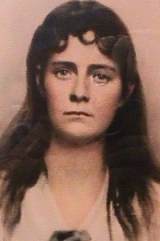 ,
now 18 years old, ran off and were married the next day. The
Shirley family, infuriated by the news of her marriage, spent the
next year attempting to get her to come back home. By the time
she finally returned, she had given birth to her daughter, Pearl.
Still wild and uncontrollable, Belle began frequenting the
saloons in Dallas where she continued entertaining by playing the
piano. It was during these days that Belle took to wearing a pair
of pearl-handled six-guns around her waist. A stark addition to
the lavish velvet dresses she frequently wore. It would become
the trademark for a much publicized image which was beginning to
form. As Jim Reed's dastardly deeds spread across Texas, Belle's
disreputable activites and her marriage to what had become
Texas's most wanted criminal, eventually got her run out of
Dallas and out of Texas after Reed was killed by an associate.
Belle moved to Kansas where she was married to a Younger for
three weeks before marrying a Cherokee Indian horse thief by the
name of Same Star, creating the name Belle Starr. Her reputation
as the "wild west" bandit Queen, portrayed by the dime
novelists was not from her criminal activities, as printed in
their mostly imaginary stories. Up to this point she had only
been arrested three times, all in Texas, with no convictions. The
reputation came from the image of this pistol packing lady's
presence in Fort Smith while appearing before hanging Judge
Parker, who presided over the Indian Territory. Here she often
defended indigent Indians charged with federal crimes.
,
now 18 years old, ran off and were married the next day. The
Shirley family, infuriated by the news of her marriage, spent the
next year attempting to get her to come back home. By the time
she finally returned, she had given birth to her daughter, Pearl.
Still wild and uncontrollable, Belle began frequenting the
saloons in Dallas where she continued entertaining by playing the
piano. It was during these days that Belle took to wearing a pair
of pearl-handled six-guns around her waist. A stark addition to
the lavish velvet dresses she frequently wore. It would become
the trademark for a much publicized image which was beginning to
form. As Jim Reed's dastardly deeds spread across Texas, Belle's
disreputable activites and her marriage to what had become
Texas's most wanted criminal, eventually got her run out of
Dallas and out of Texas after Reed was killed by an associate.
Belle moved to Kansas where she was married to a Younger for
three weeks before marrying a Cherokee Indian horse thief by the
name of Same Star, creating the name Belle Starr. Her reputation
as the "wild west" bandit Queen, portrayed by the dime
novelists was not from her criminal activities, as printed in
their mostly imaginary stories. Up to this point she had only
been arrested three times, all in Texas, with no convictions. The
reputation came from the image of this pistol packing lady's
presence in Fort Smith while appearing before hanging Judge
Parker, who presided over the Indian Territory. Here she often
defended indigent Indians charged with federal crimes. 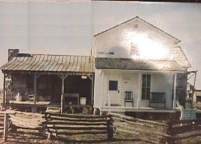 Without question
she had an association with many of the desperados of the times,
and most likely was involved in the sale of horses acquired by
questionable means, but the stories of her killing 23 men while
riding wild through the countryside, robbing banks and
stagecoaches, were all fictional. She was finally convicted by
Judge Parker for possession of stolen horses and, along with her
husband, was given a year in prison. After release, she returned
to the Territory with Sam but he was killed in a gunfight with a
law man shortly there after. She remarried and attempted to pick
up her life where she had left off. Then on February 3, 1989,
while returning home from an errand, she was shot in the back. As
she lay on the muddy road, her assailant walked up and placing a
shotgun to the left side of her head ended the life of Belle
Starr at the age of 40. Although there were many suspects the
murder was never solved and today remains one of the great
unsolved mysteries of the Old West.
Without question
she had an association with many of the desperados of the times,
and most likely was involved in the sale of horses acquired by
questionable means, but the stories of her killing 23 men while
riding wild through the countryside, robbing banks and
stagecoaches, were all fictional. She was finally convicted by
Judge Parker for possession of stolen horses and, along with her
husband, was given a year in prison. After release, she returned
to the Territory with Sam but he was killed in a gunfight with a
law man shortly there after. She remarried and attempted to pick
up her life where she had left off. Then on February 3, 1989,
while returning home from an errand, she was shot in the back. As
she lay on the muddy road, her assailant walked up and placing a
shotgun to the left side of her head ended the life of Belle
Starr at the age of 40. Although there were many suspects the
murder was never solved and today remains one of the great
unsolved mysteries of the Old West.
***THE END***
